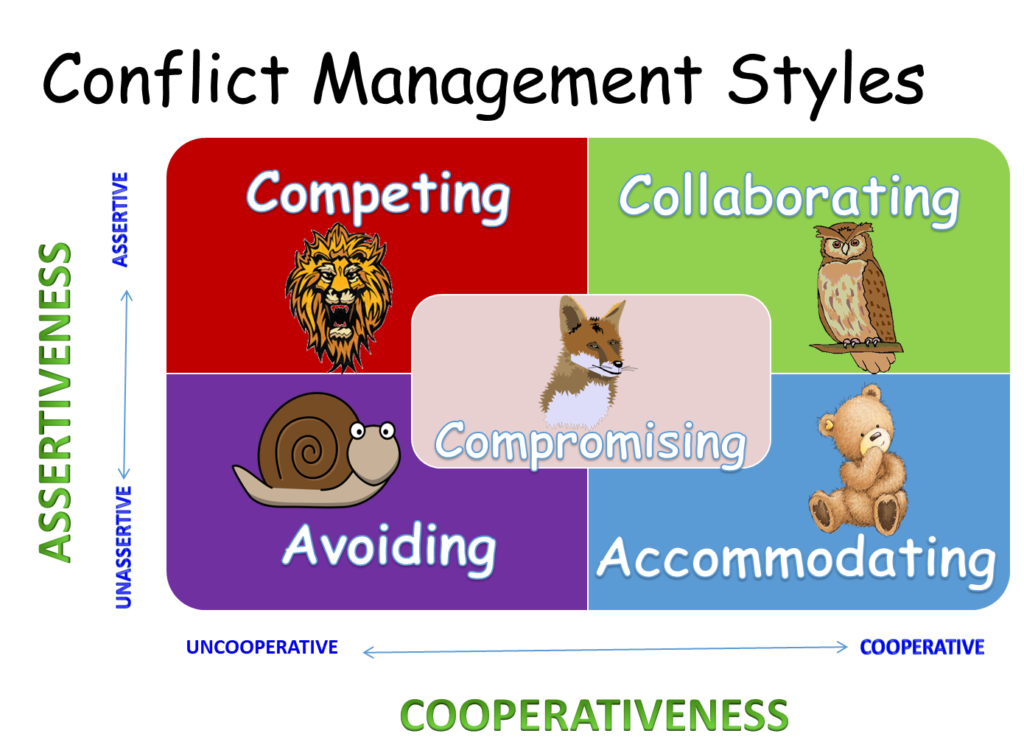Conflict Management Styles
ASSERTIVENESS AND COOPERATIVENESS
Based on Thomas-Kilmann Conflict Mode Instrument (TKI) Model, animals can be assigned to each style to help participants to understand each one further. They are:
Lions – Competitive, assertive but non co-operative
Competition is the flip-side of accommodation – it’s about making sure your own needs are met, no matter the cost. This win-lose approach is useful if there is an important deadline to meet, or if the relationship with the other party is not important. However, steam-rolling your way around the Group may get things done, but there will be an army of people who won’t catch you if you fall.
Owls – Collaborating, are assertive and co-operative
Collaboration is a road not often travelled as it can be long, and requires some skill and effort. Collaboration is about assuming positive intent and seeing things from all sides, in detail. It’s about acknowledging and accepting differences, and exploring alternative solutions that meet everyone’s needs and concerns. It is a useful conflict management strategy when the issues are important to everyone, and all sides need to be committed to the solution.
Snails – Avoiders, are non assertive and non co-operative
Avoidance is useful, if there is no pressing need to resolve differences now or in the future. Individuals are indifferent to each other’s needs, and issues are evaded or ignored completely. Generally, this is not a useful long term conflict management strategy as the workplace is never small enough to avoid someone completely!
Teddy Bears – Accommodating, are non assertive and co-operative
Accommodation is allowing the other person’s needs to be met, usually at the expense of your own. This is a useful conflict management strategy if you don’t care about the issue, or if you have little power in the relationship or situation. Also, letting the other person have their way once in a while may preserve or even build a relationship. However, being too accommodating too often can weaken your position to the point where your voice is never heard.
Those are the four main animals that every person can see in themselves. However a good team leader need to be able to adjust their style based on the conflict situation. Adapting their conflict style will allow a Team Lead to give a bit to get a bit, a more democratic approach as opposed to autocratic. The compromiser is represented by the Cute Fox who know have to adapt to any given situation.
The Cute Fox – Compromising, are sometimes assertiveness and always co-operation
Compromise is on the path toward collaboration, somewhere between competition and accommodation. It’s about giving up some ground in order to gain other ground elsewhere. You win some, you lose some! This is a useful conflict management strategy if time is tight, or if it’s not worth exploring things more fully. Also, compromise is useful when one party can’t force their solution on the other.
